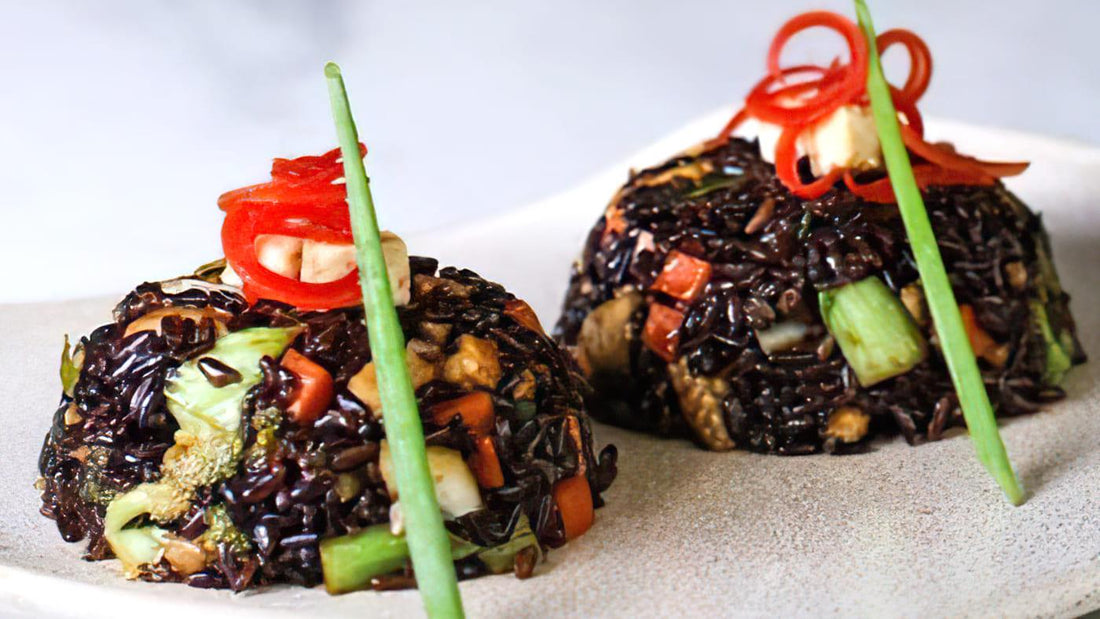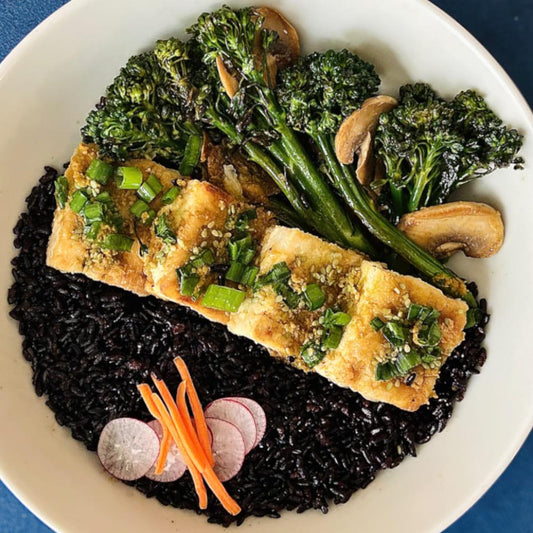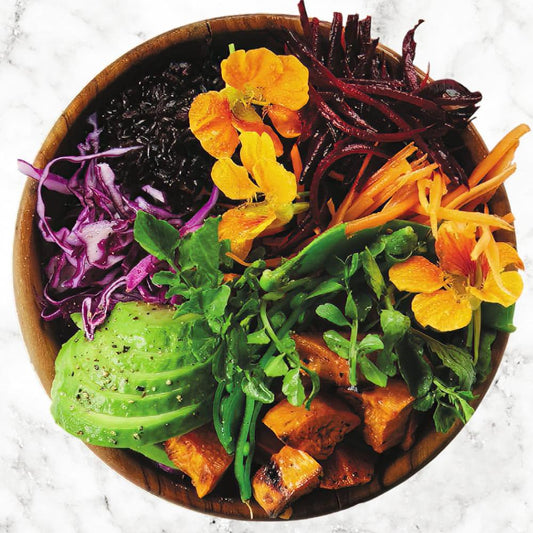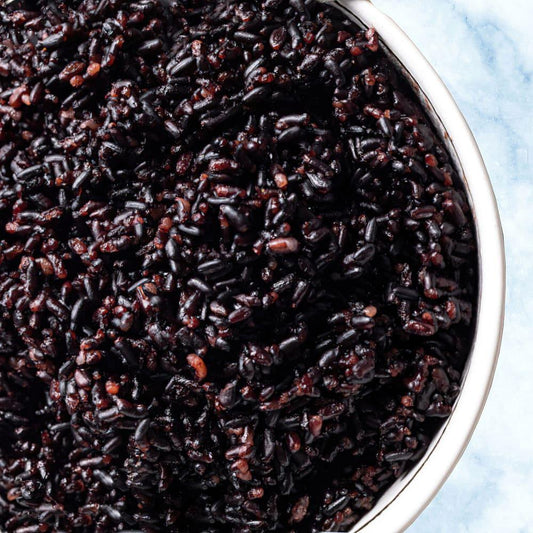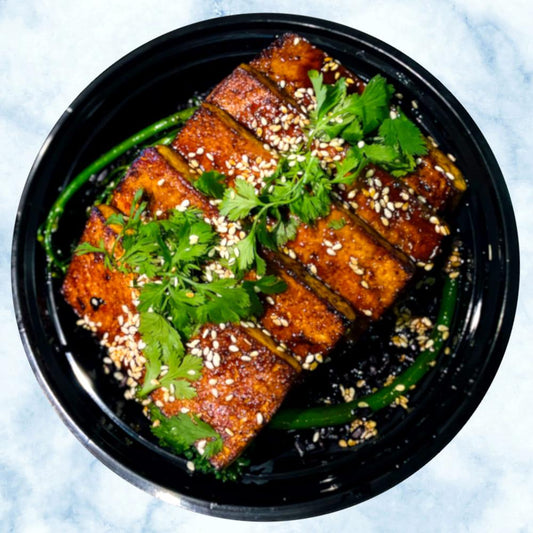Forbidden black rice is that uncommon trinity of flavorful, healthful, and aesthetically beautiful foods. Other names for this dark rice, which is a deep purple-black, include emperor's rice, forbidden rice, and purple rice.
With a pronounced nuttiness and a tinge of sweetness from the anthocyanin pigments, it has a rich, complex flavor.
The domesticated kind of wild rice, Oryza sativa, has been used in Asian cuisine for the past 7,000–9,000 years. Cultivated rice first appeared in China, according to historical evidence, and then expanded to other parts of Asia.
The outer layer of the rice grain naturally changed color, giving this cultivar a variety of hues, including red, brown, white, and black. Red was the sole hue of the wild rice.
Over time, certain societies developed a preference for particular hues and crossed several varieties to produce rice that had a consistent color. Due to its distinctive flavor, black rice swiftly rose to prominence among the more affluent social classes.
This is how forbidden rice, one of the names for black rice, came to be. Black rice was once off-limits to anyone who wasn't a noble or member of the royal family in China.

Currently, there are two types of Oryza sativa: indica, which has long grains and grows in lowland fields that are submerged in water, and japonica, which is stickier and shorter-grained.
Black rice varieties can be found everywhere, from China, Japan, and India to Thailand and Indonesia. The cultivation of this rice is widespread throughout the world. There are long-grained and short-grained variations. Because long-grained rice has a lower glycemic index and less starch, it is slightly healthier.
The Top Health Benefits of Forbidden Black Rice
Several health advantages come from eating this vibrant black rice. The dark tone of the grain is one of the most striking features.
Various foods that are blue or purple contain pigments called anthocyanins, which work to shield your cells from harm.
In addition to lowering inflammation and lowering the risk of cardiovascular diseases, these pigments are also well known for doing so. Your heart health and general fitness can benefit from eating black rice.
Forbidden Black Rice helps improve Eye Health

Black rice is rich in lutein and zeaxanthin, two carotenoids renowned for their function in promoting eye health, in addition to antioxidant anthocyanins. The effects of ultraviolet (UV) radiation are lessened and the cells in your eyes are protected thanks to these antioxidants.
Anthocyanins, the pigments included in plants like black rice, help shield the eyes from deteriorating conditions. Not to mention other studies that suggest a regular intake of black rice assists in reducing the chances of macular degeneration, developing cataracts, and other vision disorders, one observational study claims that anthocyanins in black rice are connected with preventing and treating impaired vision.
Forbidden Black Rice improves Digestive Health

In addition to providing gastrointestinal relief, black rice is a great source of fiber that will give your stool more bulk, so easing, preventing, and/or treating bouts of diarrhea. The fiber facilitates better bowel motions and alleviates constipation.
Higher dosages of fiber can aid in preventing the body from absorbing hazardous substances by washing them out.
Studies have shown that a diet rich in dietary fiber from whole grain rice variants is protective against digestive disorders like irritable bowel syndrome (IBS) since that fiber is trying to get rid of toxins from your body.
Forbidden Black Rice improves Heart Health

Black rice contains a variety of antioxidants that have been proven to be protective against heart disease and other cardiovascular disorders.
For instance, it has been demonstrated that anthocyanins can reduce triglyceride and cholesterol levels, both of which are linked to the onset of heart disease. This is a result of their capacity to reduce atherosclerotic plaque development in the arteries. This lowers the chance of heart attack and stroke by maintaining clear arteries.
Researchers showed that supplementing with 80 mg of anthocyanin for two weeks reduced levels of bad cholesterol (LDL) while significantly raising levels of good cholesterol in a study on people with high cholesterol (HDL).
Furthermore, a study discovered that flavonoids, like those in black rice, may lessen the death-related consequences of heart disease.
Forbidden Black Rice helps with Diabetes Management
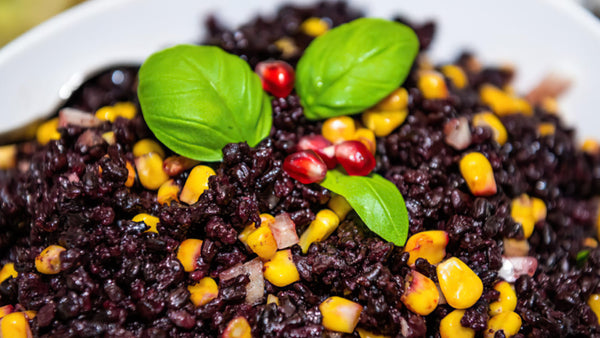
Anthocyanins, a type of flavonoid, have an impact on blood sugar levels and diabetes control. Your body responds favorably to phytochemicals, improving your body’s insulin sensitivity so you can utilize glucose more effectively.
They also aid in lowering blood sugar levels by slowing down the breakdown of sugar in the small intestine.
Forbidden Black Rice is Naturally Gluten Free

Black rice is naturally devoid of gluten, a protein present in all foods made from wheat, barley, and/or rye, much like other forms of ordinary rice.
Most health-conscious people or those who have gluten intolerance, such as those who have celiac disease, or any other gastrointestinal illness that may be aggravated by gluten, like irritable bowel syndrome, are familiar with the term "gluten-free."
The human stomach typically finds it challenging to digest the protein called gluten, which is found in wheat and other cereals including barley, rye, and triticale (a hybrid between wheat and rye).
Protease enzymes, which break down protein during digestion, have a difficult time digesting gluten since it is a protein. Large units of amino acids can get through the intestinal wall and into the rest of the body in this way, where they induce inflammation and other related problems. Some people can endure these adverse effects, but others cannot, and they should steer clear of anything that contains gluten.
Gluten sensitivity can have devastating symptoms and negative side effects, including a higher chance of getting leaky gut syndrome.
This whole grain may be beneficial to many people who have gluten sensitivity in reducing stomach issues caused by the sensitivity to gluten.
Forbidden Black Rice is Nutrient Dense

Amino acids, fatty acids, antioxidants, flavonoids, anthocyanins, and other phenolic compounds are abundant in black rice.
Black rice has a mixture of essential and non-essential kinds of 18 amino acids. Amino acids are essential to many bodily processes, from digestion and energy production to skin and tissue regeneration.
Black rice is also a good source of the following nutrients:
- Vitamin E
- Riboflavin (B2)
- Niacin (B3)
- Beta-carotene
- Lutein
- Zeaxanthin
- Calcium
- Chromium
- Phosphorus
- Iron
- Manganese
- Potassium
- Zinc
- Copper
- Magnesium
How to Cook Forbidden Black Rice

Black (and brown) rice takes longer to cook than white, simple-to-prepare kinds because it is denser and chewier.
Even though this requires more time to prepare, it's always worthwhile to think about the long-term advantages.
Ten extra minutes now can help you save hours later on.
Before you start cooking, rinse and soak the ingredients to speed up digestion and cut down on cooking time.
Directions:
- Soak the rice overnight or thoroughly rinse it in cold water.
- Add a teaspoon of salt and one cup of rice to a pan with two cups of water (sea salt is healthier than table salt)
- Put a tight lid on top and bring it to a boil.
- If your rice was pre-soaked, simmer for 20 to 30 minutes. Simmer for 50–60 minutes if not. Verify frequently.
How to Serve Forbidden Black Rice

Like white or brown rice, black rice can be served as a straightforward side dish.
It serves as a fantastic foundation for grain salads and grain and vegetable bowls. Additionally delicious in burritos and wraps.
Black rice is ideal for sushi since it is naturally sticky. Black rice is frequently used to prepare puddings and sweets.

